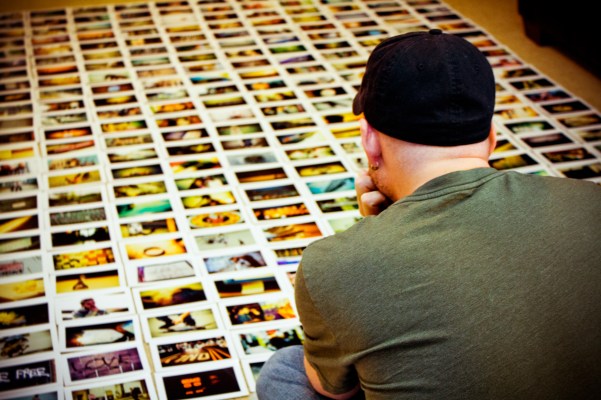Sites like Tumblr and Reddit have taken the practice of sharing pictures and turning them into viral memes into something of an art form. But on the paid, professional side of the equation — when pictures are used for commercial purposes — there has been relatively little evolution.
Now, just as music has seen a rush of companies emerging that are finding legitimate (but still popular) ways of making money from digital music, startups are cropping up that are looking to create more frictionless, and more financially-rewarding, ways for photographers to collect royalties on their work.
One of these, London-based Picfair, is today announcing a seed round of $520,000. The funding — which will be used to build out more features in the image marketplace — comes from a number of angel investors, including Alexis Ohanian, a partner at Y-Combinator and one of the co-founders of Reddit, in what is his first investment in a non-US startup.
Other investors in the round include IDEO design director Tom Hulme, and Duncan & Max Jennings, the founders of VoucherCodes.co.uk.
Picfair’s emergence comes at an interesting time for the digital content business. The rise of citizen journalism, fuelled by ordinary people equipped with smartphones and then posting to social media sites like Twitter and Instagram, has seen a rush of amazing content being created and disseminated, sometimes exclusive and more unique than what professionals have been able to produce — something that media giants like CNN and News Corp have tried to capture with their own citizen journalism investments.
At the same time, there are a number of photo agencies, like Getty Images and Alamy, that provide a place for photographers to post and sell work for commercial organisations to use online.
But many of these agencies typically take a large cut of the fees that they charge for usage — with photographers, at best, getting only around 50% of the charge but more commonly less than 20%, Lanyado told me. It leaves a big gap for new players to come in and do something different on a few different fronts: tapping into the long tail of photographers out there already snapping and posting pictures; appealing to professionals looking for quick and possibly better profits on their work; and in general for buyers an easier way of buying pictures with less guilt, because you know you’re giving a better cut to the creators of the images.
Picfair’s marketplace model is very simple: when a picture that you post to the site gets bought, Picfair takes a 20% commission on top of whatever fee you set for the work. The pictures themselves are organised by themes, and have behind them an algorithm that tracks what kinds of images are being shared across the web to moderate what might be most popular in the Picfair database itself.
Picfair, indeed, is a double-entendre, playing on two definitions of “fair”: a bazaar where people can browse and shop for pictures; and an honest deal.
It’s not the only one going after this space of course: EyeEm, the Berlin-based startup that has a double purpose of existing as a photo-sharing app as well as a place to sell pictures, recently teamed up with Getty Images for select photos from the app to be syndicated to the much larger photo agency site — giving photographers potentially much larger exposure (pun intended) than they may have had on EyeEm alone. That’s a sign not just of how there are other startups in this space, but also of how larger fish continue to move in to make sure no upstarts eat their lunch.
But Benji Lanyado, the founder of Picfair, believes that what Picfair offers is still better, based simply on how easy it is to sell on his site and the pricing structure, which sees Picfair take only a 20% cut and encourages much more purchasing of an image because of the generally lower pricing.
What’s interesting also about Picfair is the backstory behind the startup. Lanyado himself started out as a journalist, writing for places like the New York Times and Guardian. He says one of his proudest achievements on that front was writing the first big story about Airbnb in the NYT — a clipping that the startup, now valued at around $10 billion, has hung up at its office. Interestingly, he says that Airbnb was part of the inspiration behind Picfair: he says he liked Airbnb’s idea of a frictionless marketplace upsetting something that was a pain-point (finding cheap, homey, unique or local feeling places to stay in cities) before it came along.
Lanyado learned to code at General Assembly, and one of his first projects when he started to play around was something called Reddit Edit — a Reddit interface that made looking at the links across different subreddits a little easier by organising them into colored columns and in a tile-style interface. This turned out to be a fortunate first project as it made it a little easier for Lanyado to subsequently approach Ohanian, who had heard of and praised Reddit Edit.
Up to last week, Picfair was essentially a one-man band (the journey behind its bootstrapping can be found here), all the more impressive considering that it has seen some 40,000 images from 50 countries uploaded since opening for business in August 2013.
Now with some seed funding in place, Lanyado has hired four people to help code the site, work on business development and so on.
Going forward, he says that there will be further enhancements made to the Picfair platform to make the pricing even more dynamic and automatic: users will be given recommendations for pricing, and when the picture begins to buzz — based on a combination of traffic and actual purchasing — the option to automatically modify the fee, applying the concept of surge pricing to the world of picture licensing.
Image: Jason Kessenich, Picfair.com
